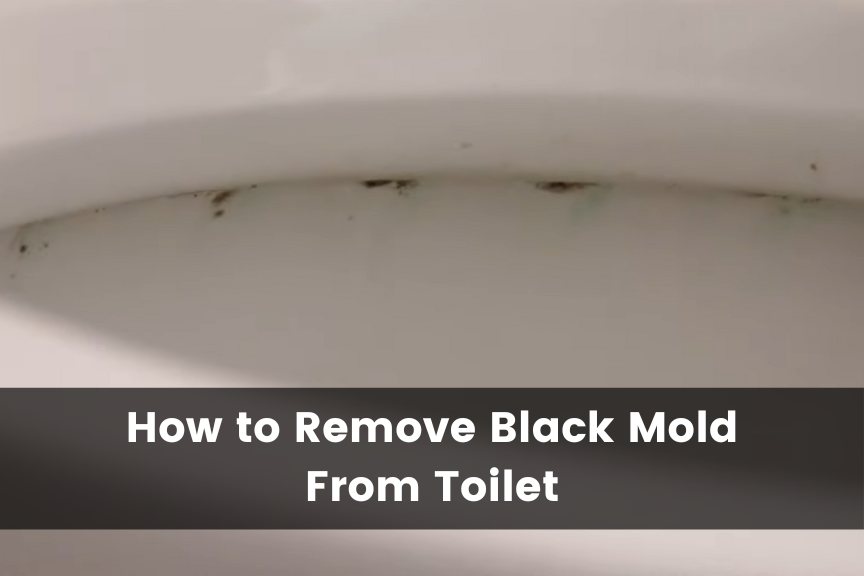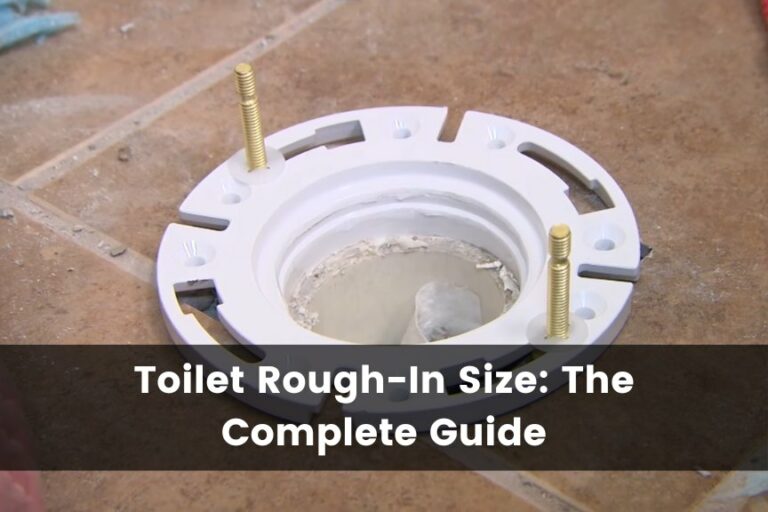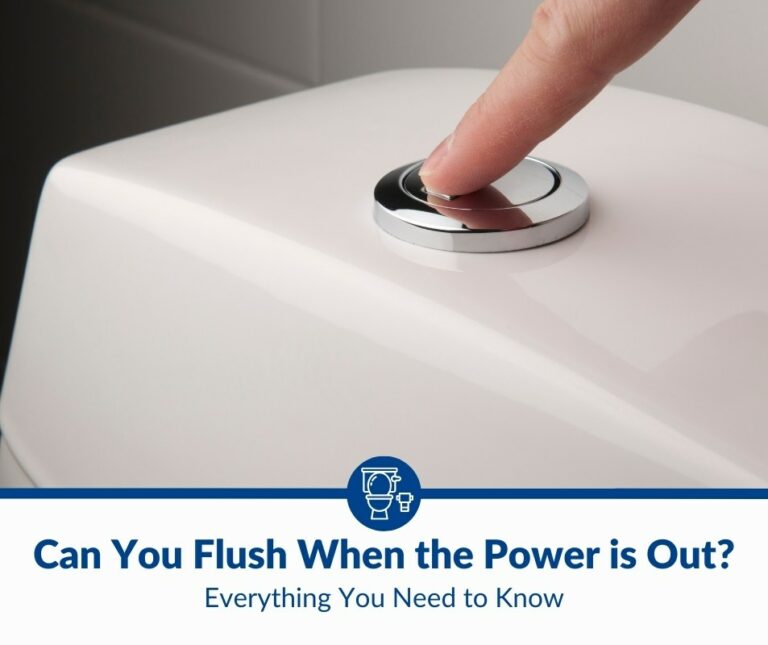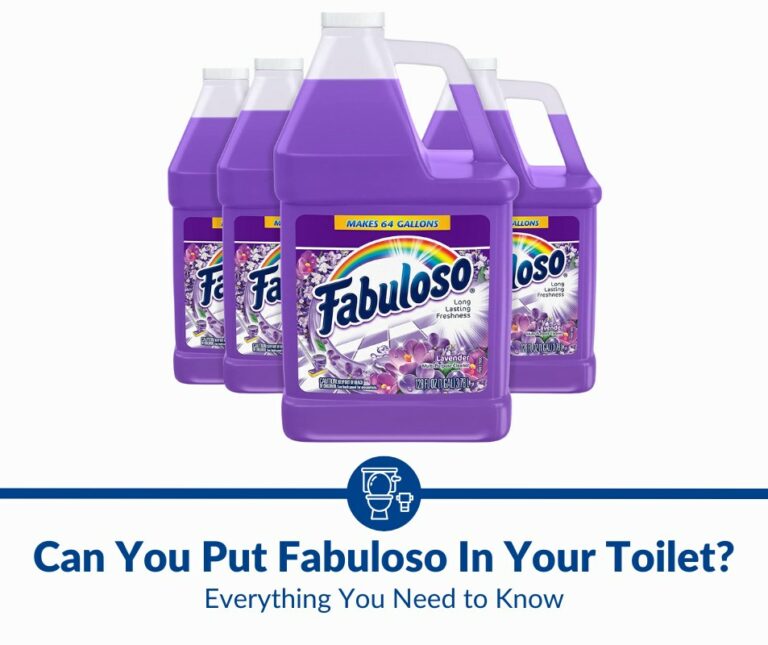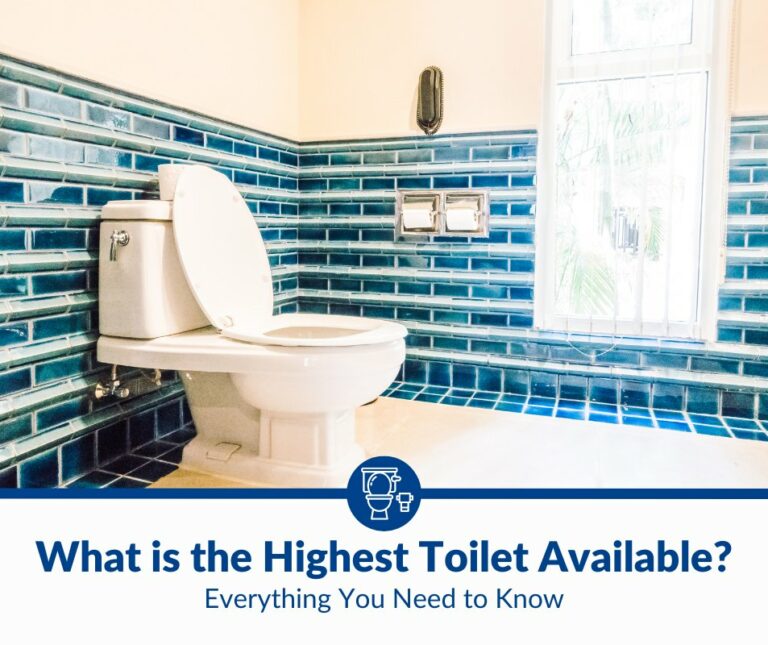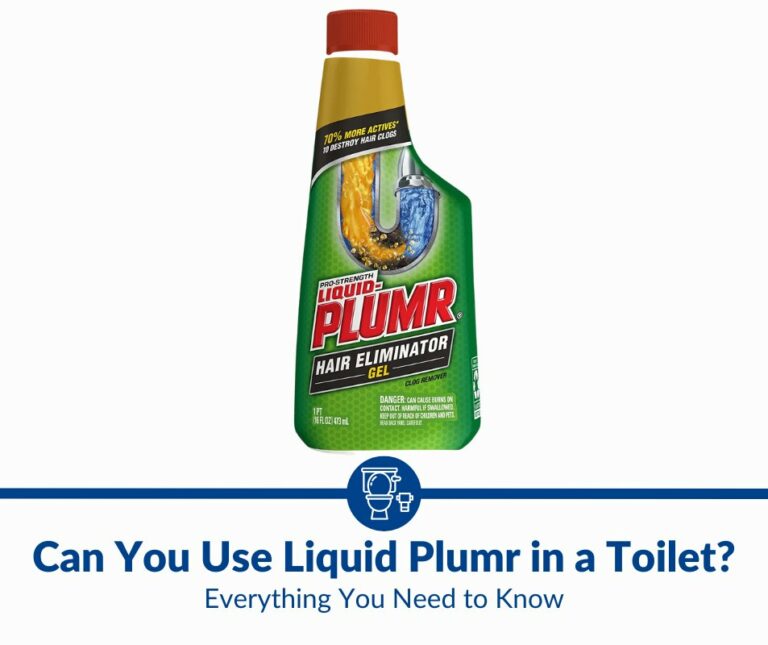Black Stuff in Toilet? How To Remove Black Mold From Toilet Tank
Keeping a clean home is something most struggle with, and no space is more important to clean than your bathroom. The toilet bowl (and tank) are particularly difficult to clean, so when you see black stuff in the toilet after flushing, you are right to be concerned. So what is the black stuff in your toilet, and how can you remove it from the toilet tank?
The black stuff in your toilet is likely black mold growing under the rim. Black stains are likely to be magnesium deposits, whereas sediments tend to be due to dirty water in your pipes. Clean your toilet regularly and inspect the plumbing to get rid of that black stuff in your toilet.
Read on to find out why you’re seeing black stuff in your toilet, what it is, and the various methods you can use to get rid of it. I’ll also cover ways to prevent this from happening.
Why You See Black Stuff Under the Toilet Bowl Rim
There are a variety of reasons why you would see black stains or other growth in your towel bowl, mostly cleaning-related. Let’s take a look at each probable culprit and explore the causes.
Black Mold Growth
Mold is a term used to describe fungal growth—which is typically found in dark and humid areas. If your bathroom doesn’t get much ventilation and you’re prone to skipping cleaning days, then you can expect mold and mildew to thrive freely in your bathroom as a whole.
The fungal spores of black mold (Stachybotrys Atra) float around in the air we breathe. Although in lower concentrations, these spores are always in the air, looking for the perfect environment to thrive.
Most modern homes have some form of ventilation in the bathroom, but it is practically impossible to ventilate the inside of the toilet tank. As such, black mold tends to grow the most there. You’ll probably notice it most if you leave the house for a few days, so there isn’t any flow of water through the toilet (which would dislodge some of the growth).
Mineral Deposits
If you’ve been keeping your bathroom relatively clean and ventilated, seeing black staining in the toilet bowl can be frustrating. Sometimes, the problem isn’t mold growth but mineral deposits instead. Manganese deposits can stain water in the toilet tank black.
Although manganese is a trace mineral that we consume every day, high levels are concerning. If the level of manganese in your toilet bowl is enough to stain it black or show up a black residue in some sections, it’s best to get your water tested.
If your water is found to have a higher-than-normal level of manganese in it, I would recommend that you avoid drinking tap water. You might have noticed that the water tastes earthy or metallic, which is an indication of manganese seeping from the soil into municipal water.
How To Remove Black Mold and Stains From Toilet and Tank
Now that you know the origin of the black residue in your toilet and tank, you’re likely wondering how to get rid of it. As daunting as the task is, cleaning your toilet thoroughly is your biggest defense against mold growth.
Before I get into the various methods you can use to clean your toilet, I’d like to mention a few precautions you should take. These are especially important if you have spotted black mold in your toilet.
- Wear gloves. You probably don’t want to touch the toilet bowl with your bare hands anyway, but it’s worth mentioning. I prefer using disposable gloves for this purpose. Alternatively, set aside a pair for toilet cleaning only.
- Open a window, or ventilate the room. It’s always best to avoid using harsh chemicals in a closed room. If your bathroom doesn’t have a window, keep the door wide open as you clean.
- Wear a mask if needed. If you have any respiratory problems, a mask is a must when using harsh chemicals to clean your toilet. In fact, everyone can benefit from an extra layer of protection against inhaling black mold or harsh chemicals.
- Dry your toilet bowl brush. Despite their convenience and ubiquity, toilet brushes are unsanitary because most people don’t know how to clean them properly. After cleaning the toilet, ensure you rinse the brush and hang it to drip-dry into the bowl. Never place it back into the brush holder when it’s dripping wet.
Below are a few common methods used to clean toilets. Choose the method most suitable and convenient for you.
Baking Soda
You’ve probably heard that baking soda has a million uses, which might be an over-exaggeration. But you can certainly use it to clean your toilet bowl and tank. You might want to empty the toilet water for the baking soda to be effective enough.
Many people like to combine baking soda with vinegar because the mixture fizzes. Keep in mind that this method will only get rid of the surface layer of black mold. As vinegar is an acid and baking soda is a base, they react with each other vigorously. It might be satisfying to look at, but I guarantee that this method does nothing toward actually deep cleaning the toilet.
Use baking soda with a drop of dish soap to scrub any and all surfaces of your toilet. That includes the tank, bowl, rim, seat, and exterior. Mist a disinfectant spray after flushing because baking soda is only an abrasive that will remove the dirt but won’t kill the mold and bacteria.
Toilet Bowl Cleaner
Walk down the cleaning products aisle in your grocery store, and you’ll find numerous products advertised as “toilet bowl cleaners.” They typically come in a spouted bottle to facilitate pouring the thick gel under the rim of the toilet. These cleaners also usually help remove limescale from your toilet.
Choose whichever brand you prefer, but make sure to read the instructions on the box thoroughly. For best results, it’s best to allow the product to sit for a few minutes before you start scrubbing using a toilet brush.
Pumice Stone
For particularly stubborn stains, some people recommend using a pumice stone to grind away at the black residue under the toilet rim. Pumice stones are abrasive enough to remove the black mold without any major damage to the porcelain of the toilet.
However, it’s worth mentioning that this is a very hands-on approach to cleaning the toilet, and many people may not be comfortable with doing it. But, a pumice stone may be the only solution if the stains are very old and dried up.
Bleach Gel
You’ve probably heard of using bleach as a disinfectant and a stain remover. However, because it is a liquid, it gets diluted in the toilet water. Bleach gel is a more viscous form of bleach, which can help you get your toilet sparkling clean, especially in the harder-to-reach spots.
Here’s what you need to do:
- Turn off the water supply to your toilet.
- Flush the toilet to minimize the amount of water in the bowl and tank.
- Squeeze the bottle of bleach gel to apply it on the stained parts of your toilet, and cover it with toilet paper to keep the gel from flowing away.
- Add more bleach gel to ensure all parts of the toilet bowl and the tank are covered.
- Wait at least 4 hours without using the toilet, keeping the toilet paper in place.
- Remove and discard the toilet paper.
- Use a toilet brush or a sponge to scrub the stains and clean the entire toilet.
- Rinse the toilet.
It’s best to keep the bathroom well-ventilated during the time you are soaking the toilet stains in bleach. Also, make sure you close the toilet lid. This will help reduce the smell of bleach from spreading in your bathroom.
As a good rule of thumb, you shouldn’t mix bleach with other chemicals as it can lead to the formation of potentially harmful gases.
Steam Cleaner
Last but not least, a steam cleaner is a powerful method for cleaning toilets that is both fast and effective. However, you will need to invest in a steam cleaner. I like to use the BISSELL SteamShot Deluxe on Amazon. It’s affordable but very powerful, which makes it ideal for removing dirt and stains from hard surfaces such as toilets.
The following are a few tips you may want to follow when steam cleaning the black residue in the toilet:
- Unscrew the toilet seat. Take it apart to reach the nooks and crannies between the seat, screws, and bowl.
- Avoid using any brushes that come with a steam cleaner on the bowl. They would become a breeding ground for bacteria and mold.
- Use the highest pressure possible. The high pressure will allow you to loosen the residue better.
- Steam clean all the surfaces, even if they aren’t stained. The high temperature of steam acts as a disinfectant, which discourages mold from growing back.
What To Do if You See Black Sediment in Toilet Bowl
If you suddenly see black sediment in your toilet bowl, you need to check your water supply and plumbing. Ask the building superintendent or the homeowners association about the proper procedure to follow. Rusty pipes, unclean water, and high mineral content in the water can lead to black sediment suddenly showing in your toilet bowl.
Reasons for Black Sediment Accumulation
Here are the most common reasons you may find black sediment accumulating in your toilet bowl:
- Limescale: High levels of calcium carbonate in your water will almost certainly lead to its accumulation in all your plumbing. Although calcium carbonate is white, it can get stained in the toilet bowl by fecal matter, mold, and bacterial growth.
- Rusty pipes: Older pipes made of metal can get rusty if the protective coating wears off. The rust finds its way into your toilet bowl and settles even after flushing.
- High mineral content: Other minerals in the water (especially manganese) can accumulate in your toilet bowl if levels are high enough.
- Unclean/unfiltered water: Most water in the US and other developed countries gets filtered and goes through a complex sanitation process. However, improperly filtered or dirty water in your pipes can show up as sediment in the toilet bowl.
- Disintegrating float: A possible but unlikely cause of sediments in your toilet water is when the float (in the tank) disintegrates.
How To Get Rid of Black Sediment
If you notice black sediment in your toilet after flushing, the first thing you should do is determine the cause. Once you have that figured out, you can fix the problem accordingly. The following are a few things you can do:
- Check your water supply to ensure it is clean, filtered water.
- Add water softeners to your home’s water supply.
- Install a whole house water filter.
- Inspect and fix any rusty plumbing.
- Check your toilet tank for broken or disintegrating parts, and replace them accordingly.
Health Concerns Regarding Black Residue in the Toilet
Most people get rid of black mold in their bathrooms because it is unsightly, but there are legitimate health concerns related to black mold that are far more important. Black mold is also known as toxic mold and can cause problems for those who are allergic and healthy individuals alike.
Some of the symptoms of black mold exposure include:
- Chronic cough
- Chronic sneezing
- Irritation to mucous membranes (throat and nose)
- Irritation to the eyes
- Rashes
- Nasal congestion
Some anecdotal evidence suggests that headaches and fatigue are symptoms associated with black mold poisoning, but there are no conclusive studies to prove this theory. Nonetheless, it’s always best to keep young children and immunocompromised people away from black mold for their safety.
Preventative Measures Against Black Mold Formation
Once you’re done with the laborious task of cleaning your toilet, I understand if you’re not too keen on repeating it. The best way to keep black mold at bay is to prevent its formation in the first place.
Below are a number of things you can do to prevent black mold from forming in your toilet easily.
Regular Cleaning Schedule
Keeping a regular cleaning schedule for your bathroom (and toilet, in specific) is a great way to ensure black mold doesn’t form. Ideally, you should give your toilet a deep clean once a week. That means cleaning the bowl, exterior, seat, and under the rim as well.
Empty the tank once a month and clean it thoroughly to ensure black sediment inside the bowl does not form. However, to make your weekly cleaning easier, I recommend giving the toilet bowl a quick scrub using the toilet brush once daily.
Toilet Rim Blocks
These are soap-filled blocks that you can hang on the rim of the toilet. They slowly release toilet cleaner into the bowl to keep it smelling fresh. The cleaning solution in toilet rim blocks helps reduce the formation of limescale and black sediments in the toilet bowl.
In other words, this is a great hands-off approach to keep the toilet bowl clean and prevent black mold growth.
Toilet Cistern Blocks
While toilet rim blocks will keep the bowl relatively clean, they do nothing to maintain the toilet tank. As such, you may want to get toilet cistern blocks. These are blocks of toilet cleaner that you can put into the tank, whereby they will slowly dissolve in the toilet each time you flush, ensuring that you don’t see black stuff in the toilet after flushing.
It’s worth mentioning, however, that some cistern blocks are too strong and can lead to the deterioration of the porcelain of your toilet. I found that the Vacplus Automatic Toilet Bowl Cleaner Tablets (available on Amazon) are great at cleaning the toilet without damaging it. The cleaner deodorizes and makes using the toilet brush significantly easier as well.
Ventilation
I cannot stress enough how important it is to keep your bathroom well-ventilated. As mentioned before, black mold spores are in the air, waiting for the opportunity to grow. Ventilating the bathroom daily will ensure that it isn’t humid and prevents the spores from growing into mold.
If your bathroom doesn’t have a window, ventilation can be difficult. You may have an exhaust fan installed, which would help to some degree.
Keep the Bathroom Dry
Lastly, try to avoid leaving water all around the bathroom, which would make for a humid environment. Of course, there will always be water in the toilet bowl. But you should strive to keep the floors and walls of your bathroom as dry as possible.
Also, choosing the correct materials for use in your bathroom is crucial. For example, carpeting in the bathroom might sound like a convenient way to add warmth to an otherwise cool room, but you should rethink that, as carpets are a breeding ground for mold and bacteria.
Fabrics and upholstery in the bathroom are inherently bad ideas. As such, you should also avoid getting those fabric toilet seat covers.
Final Thoughts
At the end of the day, the only way to ensure your toilet doesn’t show signs of black mold growth is to clean it regularly. Proper ventilation and regular plumbing maintenance are also important to keep black sediments and stains at bay.
While black mold is common, there are many health hazards that come from exposure to it. Luckily, cleaning it is not the most difficult task in the world.

